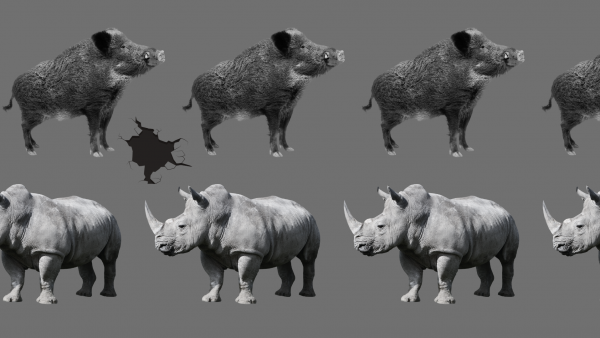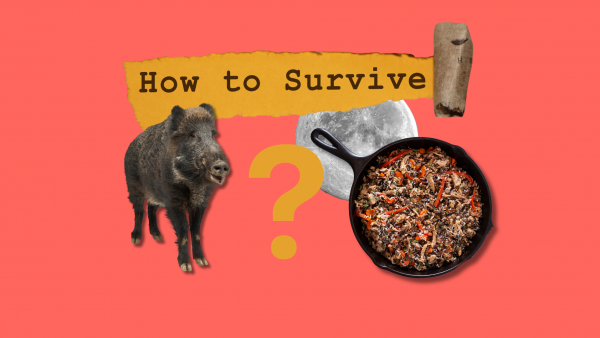By Opportuna Kweka as part of the the NEPSUS Series
Speaking of local community participation in the management of coastal resources in rural Mtwara, one can’t avoid to emphasize the role of individual activists and local NGOs. Amida Doto (not her real name) is one of these activists. She is considered a pioneer in raising awareness about the consequences of dynamite fishing in Mtwara. This illegal fishing practice is applied by young fishermen mostly to quickly capture more fish, but it has negative implications for the marine environment as well as for the local communities. One of these negative implications is the damage of corals, a habitat and source of food for fish. Coral destruction through blast fishing therefore decreases opportunities for fish to forage. This is problematic both for the ecosystem and future livelihoods of fishermen, affecting also prospective fish catch records. The engagement of Amida Doto and many other women in educating communities about this issue and placing it on the public agenda, unfortunately remains largely unappreciated. Furthermore, Amida and many other women from the coast face opponents and violence. Nevertheless, she personally continues to be actively involved and dedicated to the protection of coastal resources.
Apart from individual efforts, there are several NGOs which have worked to support the management of coastal resources. In this blog article, I name only two key NGOs which work mainly with Beach Management Units, but have also worked with Mnazi Bay Ruvuma Estuarine Marine Park (MBREMP), assisting with raising awareness during its establishment. These are Shirikisho and KIMWAM (an umbrella organization for all NGOs working in the coastal areas). Shirikisho is a NGO with deep historical roots in Mtwara. It was founded as an association of local community members who voluntarily participated in monitoring the management of coastal resources and reporting illegal dynamite fishing and mangrove cutting. Initially funded by the Rural Integrated Development Programme (RIDEP) through the Finnish Embassy, the NGO operated in Mtwara, Lindi and Kilwa, seeking alliances with some of the local communities to jointly combat illegal fishing practices and restrict mangrove and coral harvesting. KIMWAM has received support from a number of funders, the main one being Swiss Aid. KIMWAM has worked to create fishers’ associations and help fishers to form small groups of saving and credits from which some have managed to borrow and buy boats and therefore expanded their fishing activities to the deep sea.

Despite efforts by NGOs and individuals such as Amida, dynamite fishing in Mtwara continued to take place until 2017, when the government established a multi-agency task force to solve the problem, including the police and security forces. This approach has abruptly ended dynamite fishing in 2017 in Mtwara, Tanzania. The operation, as the villagers appreciate, was done without using much direct force. This is different from how it had been done in 1997, hence one villager referred to it as a “cold approach”. They see it as successful due to the collaboration between local villagers and authorities. The process involved villagers who identified fishermen involved in illegal practices. They reported them to the authorities, which in turn demanded the fishers to surrender their tools for dynamite fishing and report to the office of one authority, some for a year and some for two years. They were banned from going outside the region for all that period.
The involvement of the villagers in the operation has also contributed to creating awareness among the communities. It furthermore demonstrates that there is no necessity for public authorities to carry out military operations in order to promote nature conservation. This is contrary to public campaigns on conservation during the early 1990s, which resulted in destruction. Violence increased afterwards because dynamite fishers started turning against active members of the communities.
Despite the success for conservation, however, there are challenges of sustainability due to a lack of alternative livelihoods for dynamite fishers. This is not just a problem caused by the operation to end dynamite fishing, but the partnerships have not been successful in general in promoting alternative livelihood. In fact, there are more people fishing today than before, as villagers reported “everybody now goes to the ocean.” Part of the problem is also the lacking support in terms of tools and training on how to fish in the deep sea, as well as lack of blending of the modern with the local or indigenous knowledge and beliefs about the ocean and its processes.

Along with fish farming, tourism could be a possible source of income generation. However, interest of potential investors is limited due to the extraction of natural gas in the Marine Park area. Furthermore, business actors such as the oil and gas companies in the marine park and boat owners in the Beach Management Unit are still not viewed as partners although they support NGOs and communities. This is also one of the challenges of achieving sustainability.

Due to the challenges mentioned above, the current success in curbing dynamite fishing is unlikely to last long without an introduction of alternative livelihood activities in the area and support with fishing gears for the deep sea. The number of fishers has also increased as the local government is promoting licensing for revenue. Additionally, there is a need to build locally-owned and controlled infrastructure for deep-sea fishing. The disperse of fishermen to the deep sea will lead to a subsequent decline in dynamite fishing. With regard to fishers’ livelihoods, recent national and international initiatives promote tuna fishing as an alternative option. However, local communities are not yet considered in these initiatives. WWF, which also provides training to the Beach Management Units in Tanzania, participates in these discussions and could possibly serve as an initiator for Mtwara to be included in the initiative.

Better participation and inclusion of local communities in coastal resource management could play a key role insuccessful #marineconservation in #Tanzania. Blog by @nepsus_research
























